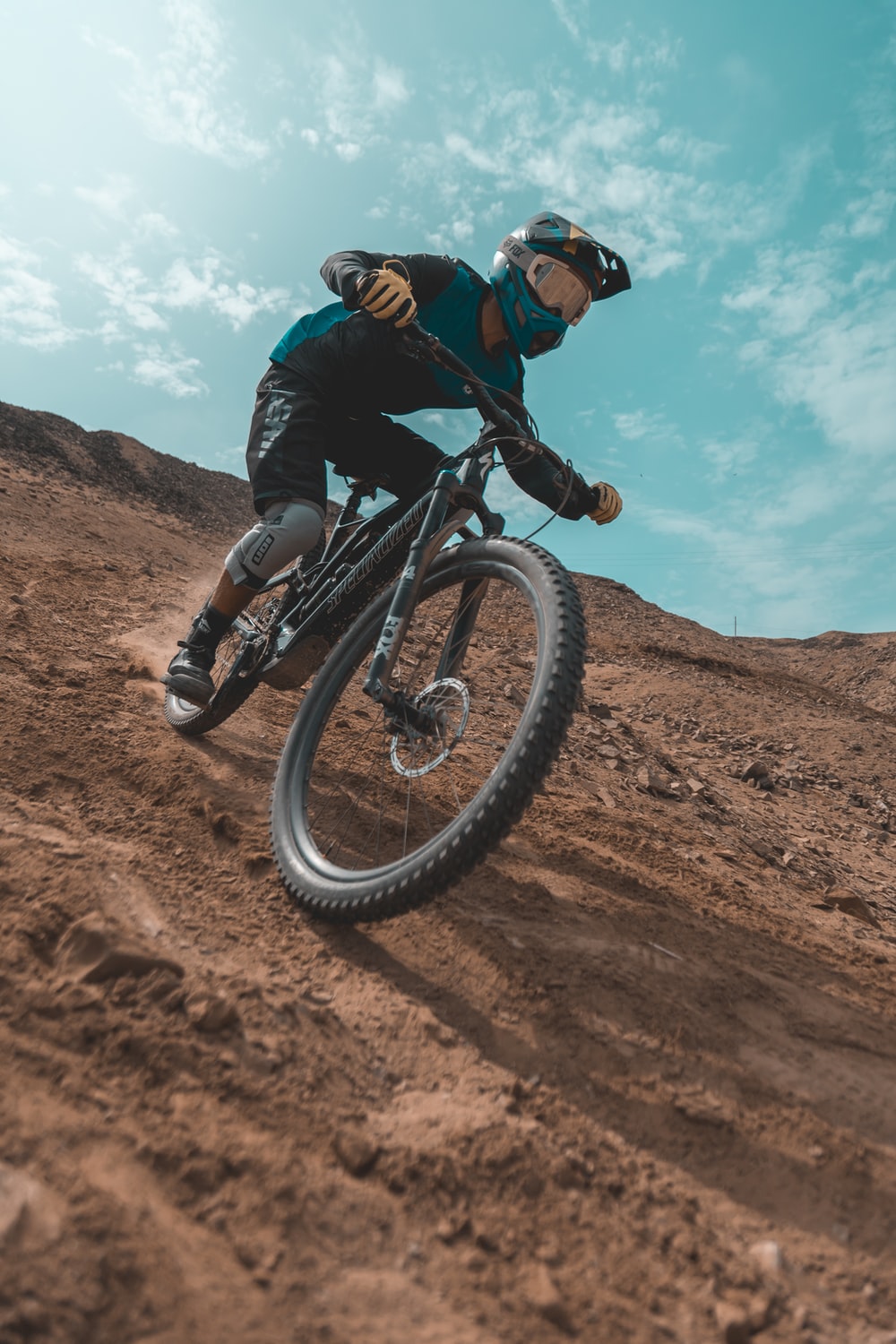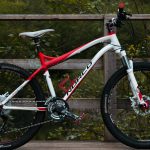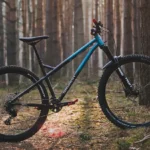For cross-country (XC) mountain biking, the humble hardtail has long been a popular choice. But with the constant evolution of full-suspension designs, many riders wonder if a hardtail is truly the best option for tackling miles of singletrack. Let’s explore the pros and cons.
What is a Hardtail Mountain Bike?
A hardtail mountain bike features front suspension via a fork but has no rear shock. The back end is rigid. Hardtails are typically lighter, simpler in design, and more affordable than full-suspension bikes. They require less maintenance and are very efficient at transferring power to the pedals.
Benefits of Hardtails for XC
There are several reasons why hardtails remain a great pick for cross-country riding. They climb extremely well, provided you can stay seated and maintain traction. The rigid rear triangle delivers an efficient, direct transfer of power from pedal stroke to forward momentum.
Hardtails also feel snappy and responsive, making them incredibly fun to whip through tight, twisty trails. The lower weight promotes quicker acceleration and easier maneuvering. You’ll be able to tackle steep climbs while carrying more speed through rollers and flat sections compared to a full-suspension bike.
From a practical standpoint, hardtails are simple, low-maintenance machines. You don’t have to worry about servicing rear shocks and linkages, saving money over the long haul. For the cross-country racer trying to extract every ounce of speed, a hardtail reduces weight and eliminates any efficiency losses from suspension designs.
Limitations of Hardtails on Rough Terrain
While hardtails are a great weapon for cross-country courses, they do have some limitations when trails get extremely rough, rocky or technical. The lack of rear suspension results in an unforgiving, jarring ride over roots, rocks and repeated hard impacts.
On very choppy descents, hardtails require great skill to keep speed under control. There is less traction and lower limits from the rear wheel bouncing around. Your body also takes more of a beating versus having rear suspension to soak up big hits.
Cross-country terrain changes constantly. If it’s not extremely technical, a hardtail gives you the advantage. But as soon as you encounter prolonged stretches of roots, rocks and bigger obstacles, you’ll likely be faster and more comfortably aboard a lightweight full-suspension bike.
Trail and Rider Factors
Your local trails and personal riding style play a huge role in determining whether a hardtail or full-suspension rig is more suitable. Smooth, buff singletrack is hardtail nirvana. Technical rock gardens are not.
Hardtails shine for the efficient cross-country rider who spins up every climb, carries momentum through flats and uses pumping techniques over roller sections. Lower speeds are more manageable on a hardtail. If your riding demands higher speeds over prolonged rough terrain, a full-suspension is likely better suited.
Another important factor is your skill and confidence level. If constantly railing corners, popping off lips, slashing turns and riding aggressively over roots and rocks isn’t your style, the simplicity of a hardtail may suit you well. Newer riders also often feel more comfortable on hardtails.
For high-speed, aggressive XC riding over technical terrain, having rear suspension significantly improves control and speed. Less energy is wasted holding on and absorbing impacts. You’ll be able to simply ride harder with less physical fatigue.
So for fitness-focused riders who live for smooth singletrack and want simplicity, the lightweight hardtail remains an excellent choice. But there’s no denying a short-travel full-suspension is more capable in really gnarly terrain.
Hardtail Cross-Country Bike Design
Major brands continue pushing hardtail XC bikes forward with lighter, stiffer frames and modern geometry to meet current demands. Modern hardtail XC bikes boast high anti-squat characteristics to resist bobbing under pedaling loads. Reach and geometry have been stretched out to improve descending capability down rougher trails.
For example, the Specialized Epic Hardtail is a hot seller in the XC racing scene. It combines an ultra-light, stiff frame with a progressive, longer-travel fork for tackling steeper, more technical terrain that racers now encounter.
While still not as plush as full-suspension, hardtail designs continue adapting to accommodate the increasing demands of cross-country courses and races. Comfort and capability over rough stuff has improved with the right suspension fork paired to a precisely engineered frame.
Full-Suspension for XC
At the same time, full-suspension bike designs have become more refined for cross-country applications. Many incorporate lockout settings, lightweight air shocks, and regressive stroke curves tuned for exceptional pedaling efficiency. The right full-suspension rig can nearly match a hardtail’s efficiency on smooth terrain.
The Trek Supercaliber and Ibis Ripley are examples of lightweight full-suspension bikes built for speed. While heavier than a hardtail overall, their 60-70mm of travel is enough to comfortably navigate root-strewn, rocky XC trails while still delivering crisp pedaling response.
For lower-speed riding, hardtails reign supreme. But these short-travel full-suspension models are incredibly capable up and down thanks to rear suspension kinematics and pedaling characteristics optimized for fast XC riding.
Suspension Forks for Hardtails
While the rear of a hardtail is rigid, quality suspension up front is critical. Most mid to high-end hardtails accommodate 100-120mm travel forks to soak up impacts and provide ample control.
Premium air-sprung forks like the Fox 32 Step-Cast or RockShox SID SL Ultimate have highly-tuned internals, lightweight chassis, and performance dampers for precise handling and buttery suppleness over roots and rocks.
You can also find lightweight, affordably-priced coil spring forks by brands like RockShox, X-Fusion, or MRP that provide a supple, smooth feel at lower costs. These straightforward forks skip infinite adjustments in favor of simple, solid performance.
To get the most capability out of your hardtail on technical XC courses, a quality fork matched to wheel size and frame geometry is a must-have.
Which Works Best for You?
When it comes down to it, both hardtail and short-travel full-suspension bikes fulfill the needs of modern cross-country riding quite well. It really depends on your priorities, budget, and what terrain makes up your local trails.
If you value the simplicity and efficiency of a hardtail, yet want the ability to smash over moderate obstacles without getting beat up, modern hardtail designs offer plenty of capability. They are lighter, less expensive, and perfect for fitness-focused riders who don’t need extreme capabilities.
For aggressive cross-country riders who crave more speed, control, and comfort over technical terrain for longer periods, a lightweight full-suspension bike is worth the added cost and complexity. Just point it down the roughest trails and let the suspension do its thing while you focus on powering up the climbs.
Ultimately, what makes most sense for your cross-country riding? Assess your local terrain, ride style, budget and goals. Revisit hardtail versus full-suspension periodically as technology and your skills progress. Most importantly, determine the right tool to keep you smiling for miles and miles on the trails.






